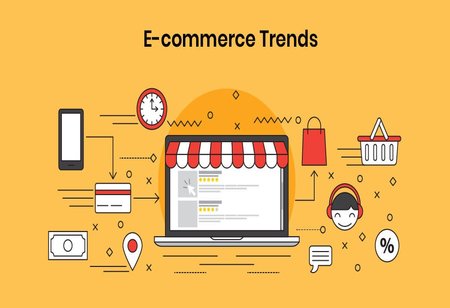Top Trends Which Will Dominate the E-Commerce Sector In 2020
By Sthitaprajnya Panigrahi
 Going beyond the brick-and-mortar shops, the e-commerce sector is flourishing abundantly at present. Expected to continue the growth graph in the future as well, the global e-commerce sector is having a CAGR of 20 percent annually. Enriching the businesses with the experience of global footprints across the world, the business through the internet is giving opportunities such as more demographic area coverage, larger client base, brand recognition, and many more. Owing to the advancements of technology, the online retail industry is adopting and incorporating new and innovative ideas to attract maximum consumers.
Going beyond the brick-and-mortar shops, the e-commerce sector is flourishing abundantly at present. Expected to continue the growth graph in the future as well, the global e-commerce sector is having a CAGR of 20 percent annually. Enriching the businesses with the experience of global footprints across the world, the business through the internet is giving opportunities such as more demographic area coverage, larger client base, brand recognition, and many more. Owing to the advancements of technology, the online retail industry is adopting and incorporating new and innovative ideas to attract maximum consumers.
Although the journey of e-commerce has been quite prolific since its establishment as an online trade platform, the sector is ready to witness the impact of some major trends in 2020. Some of the emerging trends of e-commerce industry that we can witness dominating the future are as follows:
- PWA Technology: Progressive Web Application is converting and re-modifying the website available over the internet into a mobile-friendly website format. As most of the current generation is spending the maximum amount of their time on cell phones, it will be highly effective for the companies to reach out to the desired customers instantly.
- Platform Specific Messages: Most of the youngsters are active on social media platforms such as Facebook, Instagram, Twitter, and many more. Highlighting the products on particular social media either through messages or pop-up windows can result in maximum customer recognition.
- Social Commerce: Purchasing directly through social media platforms is one of the current trends of e-commerce and gaining a lot of popularity all these years. Most of the youngsters are opting to purchase branded products such as make-ups, accessories, and attires through Instagram.
- Drone Delivery: To reach out to more customers staying in rural or areas easily inaccessible, drone delivery is expected to take over the delivery options into consideration. Evolved effectively all these years, drone service can give many advantages to e-commerce reaching out to a wider customer base without any geographical constraints.
- Chatbots, AI, and Real-Time Conversations: To give the customers a better experience through the transaction, the e-commerce businesses are using chatbots and robots to have a real-time conversation with the customers. This direct approach to interacting with customers helps online businesses to get to know the customers a little better and create personalized experiences for them in the future.
- Direct-to-Consumer (D2C) Approach: Rather than going to the customers through phases like wholesalers, distributors, and retailers the product manufacturers can reach out to the customers directly and effectively. This D2C approach is proving to be quite beneficial, time reducing and cost-effective for both sellers and buyers.
- Re-commerce: The current generation doesn’t want to own a wardrobe full of clothes but a wardrobe having unlimited options and no repetition of clothes. A similar concept is applicable to books, gadgets, and other resources. Re-commerce is proving to be an easy solution for the millennial generation as they can sell and purchase already owned stuff in e-commerce platforms.
- Modern Payment Methods: E-commerce is now not following cash options but rather trying to go digital. It is accepting payments through online payment options such as google pay and Paytms. Some of the online retails are also trying to incorporate cryptocurrency such as bitcoins into their payment options.




